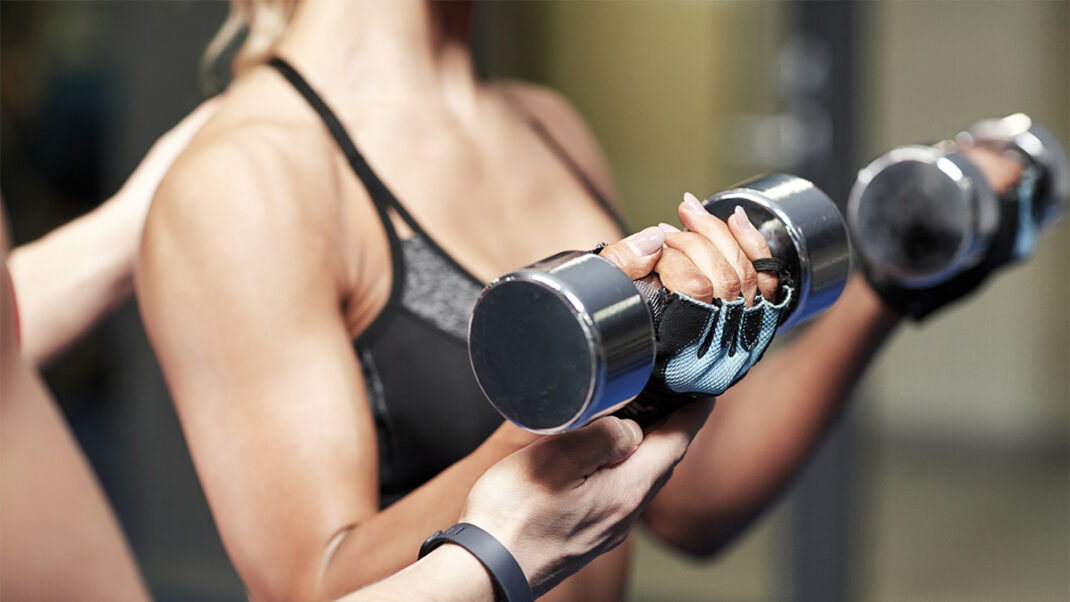September Reset: Why Fall Feels Like a Second January for Fitness

Every year, September and the arrival of fall brings a sense of renewal. The end of summer signals a return to structure, routines, and fresh motivation. Many in the fitness world call it the “second January,” a natural reset that invites people to restart or reinvigorate their health habits. Whether you are beginning a new program, looking to correct mistakes, or searching for a seasonal challenge, fall offers the perfect backdrop to commit to fitness.
Let’s take a look at the psychology behind the September reset and seven key ways to harness it, from nutrition to training strategies.
The Psychology of Seasonal Motivation
Behavioral scientists describe the September effect as part of the “fresh start effect,” when life transitions feel like natural opportunities to begin again. The start of a school year, a new season, or even a new month can provide a psychological boost that motivates people to recommit to routines.
Think of it as flipping a page in a book. After summer’s looser schedules, autumn brings new calendars, sharper routines, and a cultural sense of renewal. Parents return to school runs, professionals settle back into more structured work weeks, and cooler weather encourages outdoor activity without the draining heat.
For example, someone who has struggled to stay consistent with exercise over the summer may find it easier to build habits once their daily routine stabilizes again. The “new chapter” feel of fall makes it psychologically easier to create a clean break from old patterns and commit to new ones.
Common Mistakes in a Reset
While motivation is high, many people fall into predictable traps that undermine their progress. Three common mistakes stand out:
Going from zero to 100 overnight
Someone who has not exercised all summer might suddenly jump into a five-day-a-week gym schedule. The enthusiasm is admirable, but the body is not ready for that sudden load. This often leads to soreness, injury, or quick burnout.
Instead, try:
- Begin with 2–3 workouts per week
- Focus on building consistency before adding intensity
- Increase frequency gradually once your routine feels solid
Skipping warm-ups and cool-downs
Busy fall schedules make it tempting to cut corners. But jumping straight into sprints or heavy lifting without a warm-up risks injury, and neglecting cool-downs can make recovery harder. A simple dynamic warm-up like leg swings, arm circles, or a few minutes of light jogging primes the muscles. Post-workout stretches or mobility drills help keep progress sustainable.
Instead, try:
- Perform a 5–10 minute dynamic warm-up before training
- Add light cardio such as jogging or cycling to prepare the body
- Finish with stretching or mobility drills to aid recovery
Ignoring recovery
Some believe results come only from pushing harder. But without rest, sleep, and proper nutrition, workouts break the body down instead of building them up. For example, a runner who skips rest days may see their times slow rather than improve.
Instead, try:
- Schedule at least 1 full rest day per week
- Aim for 7–8 hours of quality sleep each night
- Support recovery with hydration and balanced nutrition
Avoiding these mistakes makes a reset safer and more sustainable.
Morning vs Evening Workouts: Which Wins in Fall?
September brings shifting schedules, which often raises the question: should workouts be done in the morning or the evening? Science offers insights, but personal lifestyle often matters most.
Research shows that strength and power typically peak later in the day, when body temperature and muscle elasticity are higher. For example, a weightlifter may find their lifts feel stronger and more explosive in the afternoon. On the other hand, morning workouts are linked to higher fat metabolism and a greater chance of long-term consistency because they are “done before the day gets in the way”.
The key is consistency. A parent with school drop-offs may thrive with a 6 a.m. session, while a college student with late classes might perform best with evening training. Both can succeed if they train regularly at a time that fits into their schedule. September is the perfect moment to experiment and choose a routine that works.
The Power of Mobility: A Desk Worker’s Reset
Fall often means more time indoors, seated at desks, or commuting. Hours of sitting tighten hips, weaken core stability, and strain shoulders, which can make workouts less effective and increase injury risk. Mobility work is the antidote.
The good news is that it does not require a long session. Even five minutes of focused drills can have a big impact. Hip openers, cat-cow stretches for the spine, and shoulder rolls loosen areas stressed by sitting. For example, taking a five-minute break between meetings to stand, stretch, and rotate through a few mobility moves can leave the body more energized and less stiff.
Adding mobility into a routine helps not only office workers but also athletes, since flexible joints and muscles enhance performance. Over time, consistent mobility training pays dividends in posture, recovery, and injury prevention.
Try this quick desk mobility routine:
- Hip Openers: 5 reps per side, lunging forward gently to stretch hips
- Cat-Cow Stretch: 5–8 slow rounds to mobilize the spine
- Shoulder Rolls: 10 forward and 10 backward to release tension
- Torso Twists: 5 reps per side while seated or standing to improve spinal rotation
- Neck Stretch: Hold each side for 15–20 seconds to relieve stiffness
Nutrition Reset in September
Summer often brings irregular eating patterns, from barbecues and ice cream to irregular meal times while traveling. September’s return to routine makes it easier to reset.
Start with structure. Planning balanced meals around lean proteins, whole grains, vegetables, and fruits provides steady energy for training. Seasonal produce such as apples, squash, and root vegetables adds variety, micronutrients, and budget-friendly options.
Hydration is equally important. Cooler weather can dull thirst signals, yet dehydration still impairs performance and concentration. A good strategy is to keep a water bottle at your desk or aim for a glass of water with every meal.
For example, someone used to grabbing fast food over the summer could shift to prepping overnight oats for breakfast, a salad with protein for lunch, and roasted vegetables with fish for dinner. These small, consistent steps create long-term benefits.
Simple steps for a September nutrition reset:
- Plan your meals: Write down 2–3 go-to breakfasts, lunches, and dinners you enjoy and can rotate.
- Build a balanced plate: Fill half with vegetables, one-quarter with lean protein, and one-quarter with whole grains.
- Use seasonal produce: Add apples to oatmeal, roast squash as a side, or prepare soups with root vegetables.
- Prep ahead: Make overnight oats, pre-chop vegetables, or cook proteins in bulk to save time during the week.
- Stay hydrated: Keep a refillable water bottle nearby and pair every meal with a glass of water.
- Snack smart: Replace chips or candy with fruit, nuts, or yogurt for steady energy.
Seasonal Immune Support Through Fitness
With colder weather and busy schedules, fall often coincides with higher rates of colds and flu. Exercise is one of the most effective tools to strengthen immunity.
Moderate activity such as brisk walking, cycling, or strength training improves circulation of immune cells, helping the body respond more efficiently to pathogens. For example, someone who walks for 30 minutes five times a week may experience fewer respiratory infections than someone who is sedentary.
However, balance matters. Overtraining without proper recovery can temporarily suppress immunity, leaving athletes more vulnerable. This is why marathon runners and endurance athletes often experience colds after long training cycles. Pairing regular training with recovery, hydration, and good nutrition creates the best defense.
Seasonal Performance Challenges for Motivation
For people who already train consistently, September can feel less like a fresh start and more like an opportunity to raise the bar. Seasonal performance challenges are an effective way to keep motivation high.
A challenge might be endurance-based, such as running 100 miles across the month, or skill-based, like achieving a handstand hold by October. These short-term, specific goals provide structure and accountability. For example, joining a local fall 5K race gives a concrete deadline to train toward, while a 30-day yoga streak helps build consistency and flexibility.
Research shows that clear, measurable goals are more effective than vague intentions such as “get stronger” or “run more”. By setting seasonal challenges, athletes can maintain excitement and momentum as the year winds down.
Examples of seasonal performance challenges:
- Endurance goals: Run 100 miles in September, cycle 200 miles, or hike a new trail each weekend.
- Strength goals: Add 25 pounds to a squat or deadlift, complete 50 push-ups without stopping, or build up to 20 pull-ups.
- Skill goals: Hold a handstand for 30 seconds, master double-unders with a jump rope, or achieve the crow pose in yoga.
- Consistency goals: Do 30 days of mobility work, log 10,000 steps daily, or complete four strength sessions per week for a month.
- Event goals: Sign up for a local fall 5K or 10K, join a CrossFit competition, or participate in a charity fitness challenge.
Make the Most of the Seasonal Reset
September feels like a clean slate, and science explains why this moment fuels motivation. The season offers both external cues and internal drive to create meaningful change. By avoiding common mistakes, setting realistic goals, balancing training with recovery, prioritizing nutrition, and even trying new challenges, exercisers can use the September reset as a springboard into lasting success.
The key is sustainability. Small, consistent actions build habits that last beyond the first cool days of fall, carrying strength, energy, and resilience into the winter months.
References
Behm, D. G., Chaouachi, A., Lau, P. W., & Wong, D. P. (2016). Short durations of static stretching when combined with dynamic stretching do not impair repeated sprints and agility. Journal of Sports Science & Medicine, 15(2), 356–363.
Campbell, J. P., & Turner, J. E. (2018). Debunking the myth of exercise-induced immune suppression: Redefining the impact of exercise on immunological health across the lifespan. Frontiers in Immunology, 9, 648. https://doi.org/10.3389/fimmu.2018.00648
Chtourou, H., & Souissi, N. (2012). The effect of training at a specific time of day: A review. Journal of Strength and Conditioning Research, 26(7), 1984–2005. https://doi.org/10.1519/JSC.0b013e31825770a7
Dai, H., Milkman, K. L., & Riis, J. (2014). The fresh start effect: Temporal landmarks motivate aspirational behavior. Management Science, 60(10), 2563–2582. https://doi.org/10.1287/mnsc.2014.1901
Garber, C. E., Blissmer, B., Deschenes, M. R., Franklin, B. A., Lamonte, M. J., Lee, I. M., Nieman, D. C., & Swain, D. P. (2011). Quantity and quality of exercise for developing and maintaining cardiorespiratory, musculoskeletal, and neuromotor fitness in apparently healthy adults: Guidance for prescribing exercise. Medicine & Science in Sports & Exercise, 43(7), 1334–1359. https://doi.org/10.1249/MSS.0b013e318213fefb
Harvard T.H. Chan School of Public Health. (2024). The nutrition source: Healthy eating plate & pyramid. https://www.hsph.harvard.edu/nutritionsource/healthy-eating-plate
Kölling, S., Steinacker, J. M., Endler, S., Ferrauti, A., Meyer, T., & Kellmann, M. (2016). The longer the better: Sleep–wake patterns during preparation of the World Rowing Junior Championships. Chronobiology International, 33(1), 73–84. https://doi.org/10.3109/07420528.2015.1118384
Locke, E. A., & Latham, G. P. (2019). The development of goal setting theory: A half century retrospective. Motivation Science, 5(2), 93–105. https://doi.org/10.1037/mot0000127
Page, P., Frank, C. C., & Lardner, R. (2012). Assessment and treatment of muscle imbalance: The Janda approach. Human Kinetics.
Schwingshackl, L., Bogensberger, B., & Hoffmann, G. (2017). Diet quality as assessed by the Healthy Eating Index, Alternate Healthy Eating Index, Dietary Approaches to Stop Hypertension score, and health outcomes: A systematic review and meta-analysis of cohort studies. Journal of the Academy of Nutrition and Dietetics, 115(5), 780–800.e5. https://doi.org/10.1016/j.jand.2016.12.009


